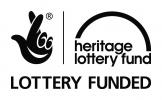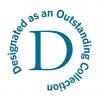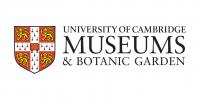Our collections
Our collections rival those of the major university museums worldwide.
They are significant for our knowledge of the history of fauna around the world, and for the history of science itself.
We also hold the primary historical record associated with our collections — the ‘Histories’ — and major archive collections from scientists associated with the Museum or its collections.
We welcome research use as well as photography and filming of our collections.
Historical significance
The collections of the Museum are significant for our knowledge of the history of fauna around the world. It is equally true that the collections are significant for the history of science itself.
This applies not just to the Darwin material, but also to many of the other named collections assembled during the nineteenth century. This was a key period for the development of modern biology. Cambridge was a centre of major importance, and several of the individuals associated with the Museum were central figures in the most active areas of debate.
These collections generally came to the Museum with the collectors’ own catalogues and notebooks (e.g. the McAndrew, Crotch, Hepburn, Woodward, Saul, Swainson and Strickland collections). Some of these historical collections have remained together in their original cabinets, organised as they were by the original collectors. Preservation under these conditions is exceptional. It makes them less accessible to the modern biologist, but more valuable to the historian, particularly at a time when historians of science are becoming increasingly interested in the ‘material culture of Science’.
Of particular importance in this respect are the collections of microscope slides that Darwin prepared while studying barnacles – his proof to the world that he was not just a naturalist, but also a ‘professional’ zoologist. Of comparable importance in another discipline are the embryological sections cut by F.M. Balfour, Professor of Zoology and author of the influential ‘Manual of Comparative Embryology’ (1881) who pioneered new microscopical techniques, including the development of the microtome for preparing serial sections.
Other items of exceptional historical interest are the beetles thought to have been collected by Darwin whilst an undergraduate at Cambridge; the local Natural History collections of the Reverend Leonard Jenyns, (the man originally chosen as the naturalist for the Beagle voyage, and who subsequently described the Beagle fish) and a set of bird skeletons collected by Alfred Russell Wallace in Indonesia. Wallace was co-originator of the theory of natural selection but, unlike Darwin, he did not enjoy independent wealth. He was obliged to collect specimens for sale. Eighty of them found their way to us.
The primary historical record associated with the collections is contained in seven bound volumes, the ‘Histories’ spanning the tenures of two early superintendents of the Museum, J.W. Clarke (1866-1891) and S.F. Harmer, (1892-1908). These contain all their correspondence and documentation relating to the acquisition and use of the collections, including letters from Darwin, Huxley, Agassiz and Owen.
The Museum also holds major archive collections for Strickland and Swainson. Both were great ornithologists, but both were also concerned with much wider issues – the process of biological classification, the rules of nomenclature and the significance of taxonomic structures. William Swainson (1789-1855) promoted the ‘Quinarian system’ of classification which enjoyed a tremendous vogue in the 1830s. Hugh Strickland (1811-1853) rejected this classification, and in 1843 propounded his own theories of classification at the meeting of the BAAS in Cork. He also prompted the BAAS to appoint a committee, which included Darwin, Henslow and Owen, to consider the “rules by which the Nomenclature of Zoology may be established”. The Museum archives contain the annotated manuscript copies for Swainson’s popular science books, and seven volumes of Strickland’s correspondence relating to these interests, as well as his 2 metre hand-drawn wall chart on ‘The Natural Affinities of the Incessorial Birds’. This chart, which was presented at the BAAS meeting, is of particular interest because it presents, not a phylogenetic tree of the type with which we have grown familiar, but a map showing degrees of affinity.
Additional material in the archives includes Strickland’s documentation for his book on “The history, affinities and osteology of the Dodo, Solitaire etc.” (1848, written with A.G. Melville), the manuscript copy of Jenyns volume on the Fishes collected on the Beagle voyage, five volumes of correspondence between Alfred Newton and John Gurney (a founding member of the Norfolk Naturalists Trust), and much correspondence relating to Parrington and other more recent staff of the Museum.
We have photographic material dating from the early part of the 20th century, notably quarter plates taken by Hugh Cott in Africa and Con Benson in Madagascar. Much of this remains to be catalogued and assessed. The Museum also retains a number of 19th century teaching charts (e.g. by Owen, “On the Nature of Limbs”) and German embryological models. We also hold two Death’s Head Hawkmoths collected in George III’s bedroom during his final attack of madness.





